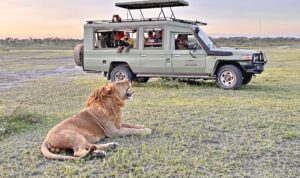The lion (Panthera leo) is a mammal belonging to the Feline family, characterized by its territorial and carnivorous behavior. Its average lifespan ranges from 10 to 14 years. Lions are the King of the Jungle as they are feared by all and fears none. Their biggest most scary enemy is among themselves. Their ability to live in big social groups makes them an army of the strongest.
Male lions have a weight range of 170 to 250 kg while females weigh between 140 to 190 kg, with the heaviest individuals being found in Namibia’s Okavango Delta and the Serengeti National Park in Tanzania.

There is something special with lions in Okavango Delta; generally, these cats detest water, however, in the delta they have learned to survive and hunt in water.
Photo Credit: Getty Images
The average height of an African female lion is 1 to 1.2 meters and 1.1 to 1.4 meters for males. The gestation period for a lion lasts approximately 3.5 months. Being the largest cat species in Africa, lions are known for their awe-inspiring size and strength.
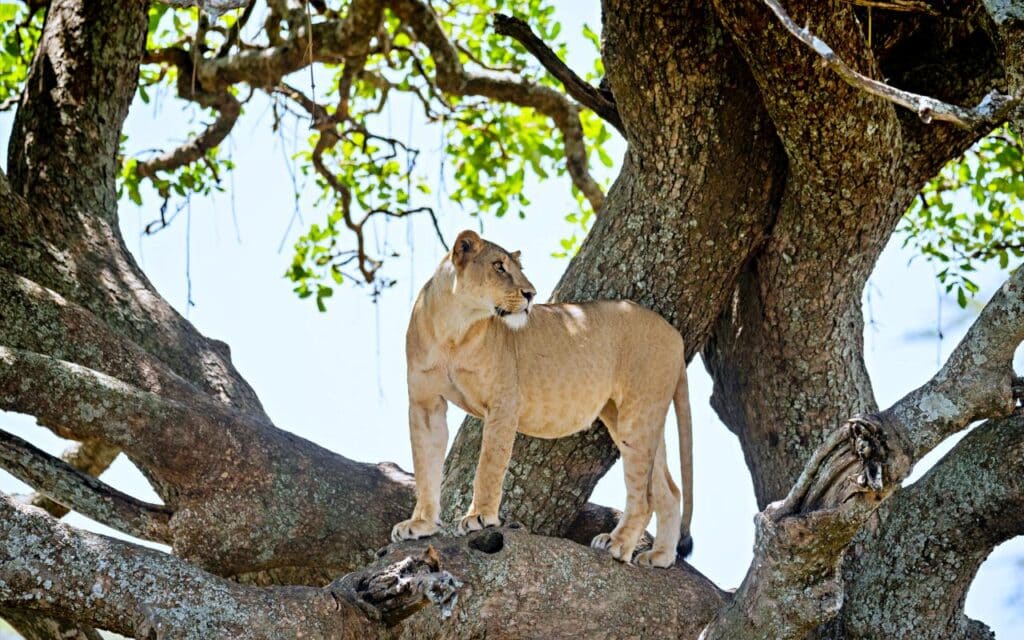
Despite the African lion’s sheer size, this powerful cat has portrayed an unprecedented ability to climb short trees mostly in eastern Africa.
Photo Credit: Hassan/Glimpse Guide
Lion’s Common Behavior
The lion exhibits several distinctive characteristics. The offspring or cubs are breastfed for a period of approximately 3 to 6 months. The animal possesses retractable claws, which provide greater maneuverability when hunting prey or engaging in territorial fights. Lions live in social groups called prides, which typically comprise several females, their cubs, and one to two dominant males.
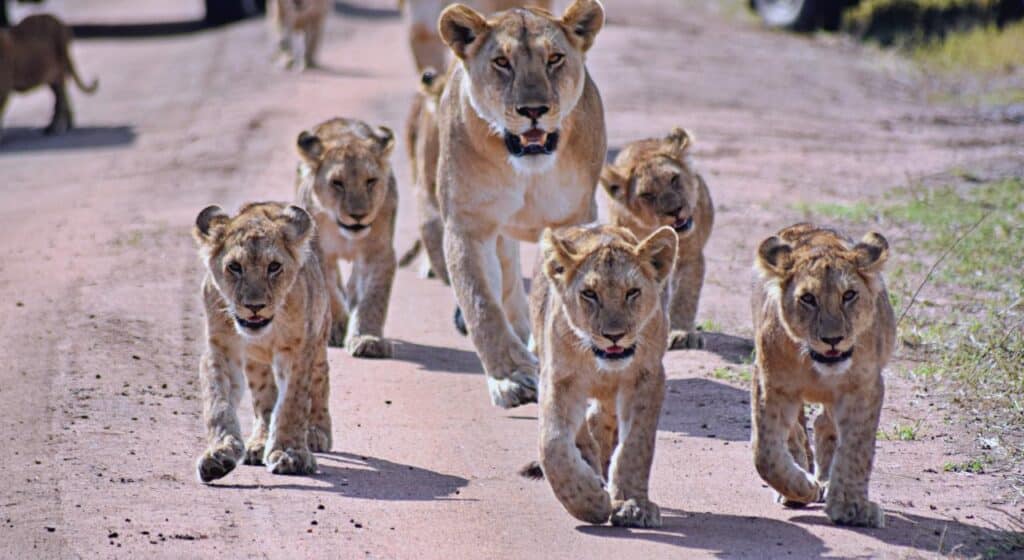
The animal has been recorded running up to a speed of 77 km/h, although this can only be maintained for short periods of 60 seconds or less. Juvenile males typically leave or get chased from their pride at around 3 to 4 years of age, while females remain in the family unit. Female lions play a key role in hunting and managing family affairs, while male lions have a larger responsibility to defend their territory from threats.
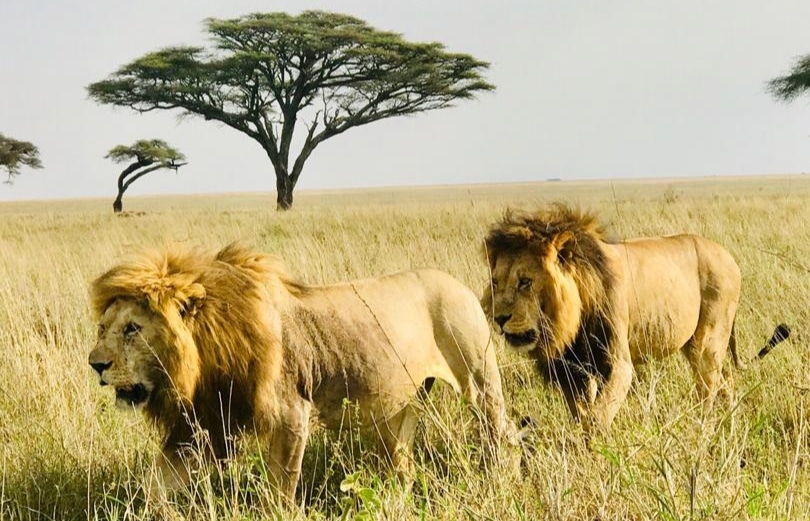
Usually, a pride is formed with 2 to 4 male lions depending on how big the number of family members is comprising.
Male seldom hunts, except when there is a serious need to engage in the killing. However, they are left with many tough tasks to fight for dominance, chasing intruders and keeping the offspring. Their mating requires enough energy as it takes 5 to 7 days, with up to 295 rounds in a single day. In this special honeymoon time, they do not eat and are isolated from the group to ensure undisrupted mating.
The Difficult Life of Male Lion
The male lion lasts as a leader of the family for 2 to 3 years, with some exception of a few who are powerful enough who make it up to 8 years. In 2023 in Serengeti, a lion nicknamed Bob Junior due to its blackish dread mane, was reported killed by his own having held the pride for 8 years. At the time of the death, his age was estimated to be 13 years. He was truly a legend and King of the Jungle.
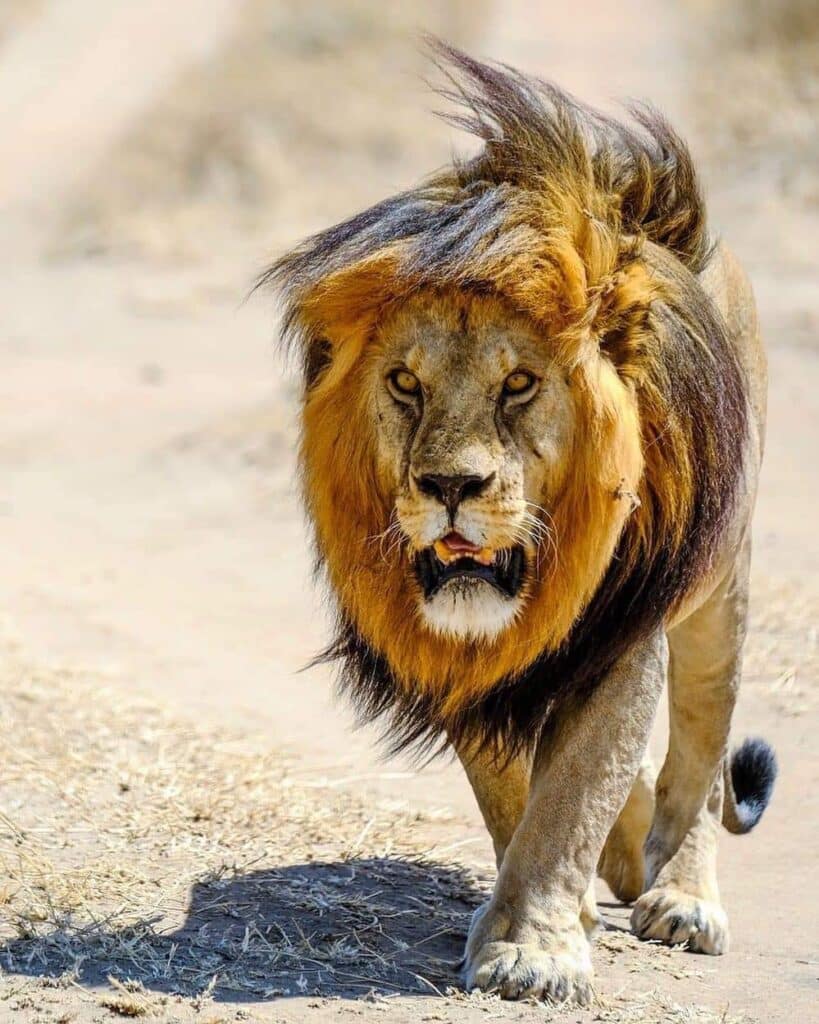
They are faced with the danger of intruders and enemies from within. A coalition of more powerful exiled young males from other prides may invaded the pride to overthrow the reigning male. What is ore heart catching is when his own male offspring return to and fight their father for takeover like in the case of Bob Junior in Serengeti National Park. He was killed by a group his 7 sons averaging 4 – 5 years. It was a tragic loss to wildlife enthusiast and guides witnessed the fight.
Photo Credit: Serengeti Lion Researcher
To avoid betrayal by his own, they always make sure to chase out of pride juvenile male at age of 2 to 3. In the case where intruder manages to overthrow the dominant male, it is likely that he kills cubs as to eliminate future threat and force females to heat.
Females may turn against their own male partner once he becomes weak for ay reason or by emergency of a new more attractive and stronger male.
Less Common Behaviors of Lion
Climbing Trees
Lions are known to be predominantly terrestrial mammals; however, they are instinctively seen on trees mostly in Manyara, Tarangire, and Serengeti National Parks. There are several reasons leading to lions climbing trees, including escaping destructive insects, the type of trees surrounding the area (such as the sausage tree), and seeking a great view of the surrounding areas where grass and landscape cause obstruction. Trees are a peaceful resting place and a great spot for a nap while enjoying cool air.
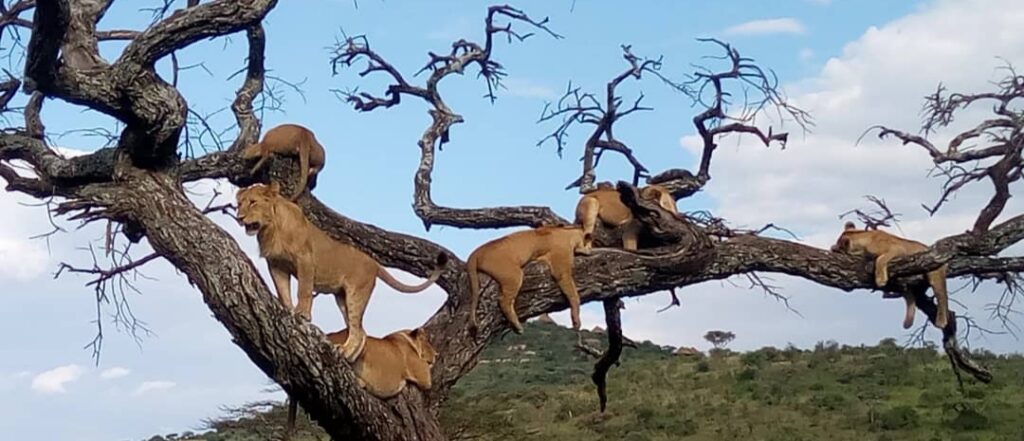
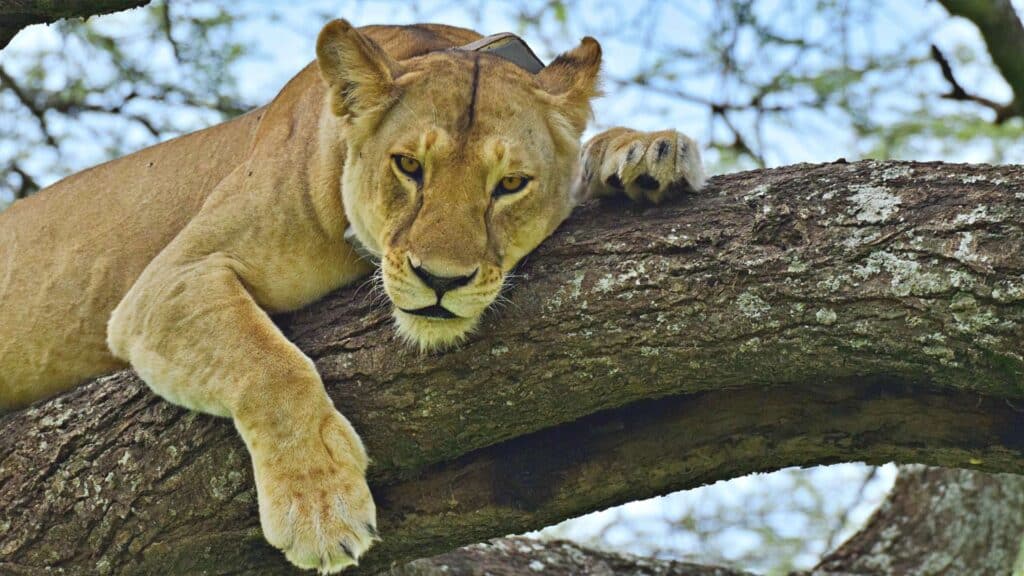
They also protect their claws from infections during the wet season since their claws are their greatest weapon, and it’s a lifetime cost to lose them.
Sometimes in avoiding dew, they also prefer staying on rocks to keep claws dry and infectious-free. Geographical location and seasonal changes are major drivers for tree-climbing lions.
One may wonder why a leopard’s life is mostly spent on trees while lions seem to struggle to climb them. Simply put, leopards have stronger forelimbs which enable them to easily hold onto trees, and their bodies are lightweight.
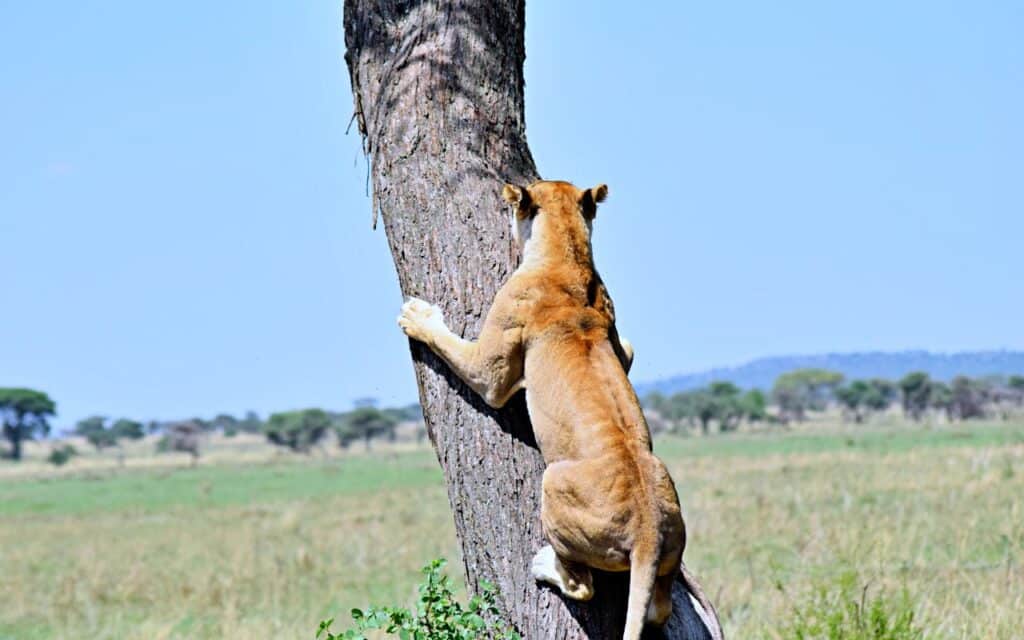
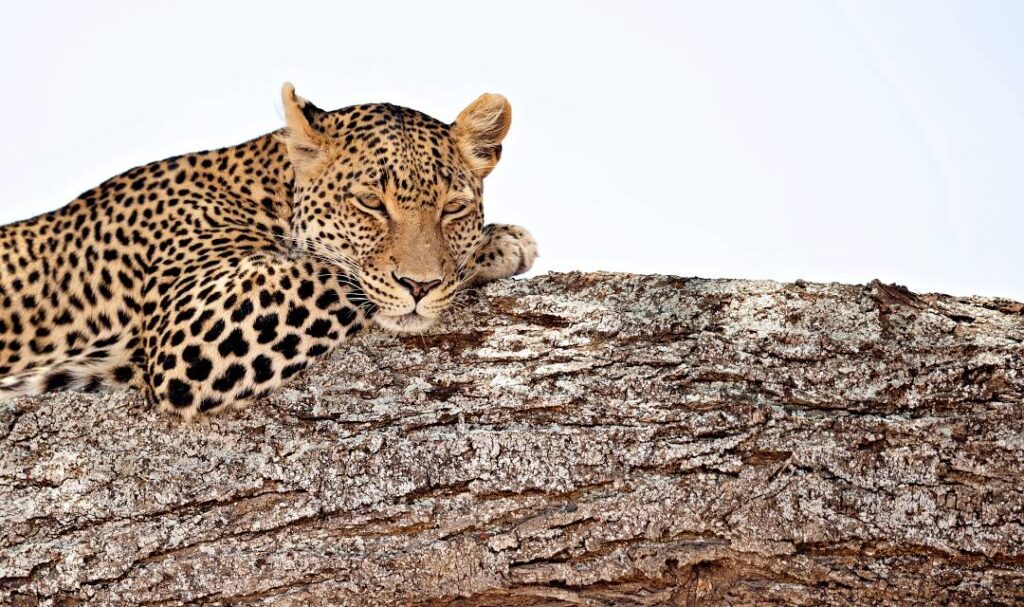
On the other hand, a lion’s hind limbs are the strongest, and they constantly propel the body from behind. Leopards are also solitary and their only way to defend their killing is by staying where other carnivores like hyenas can’t reach them.
Cannibalism Among Lions
It is not so common for lions to eat one of their own, however, it is said that to every rule there is an exception. It happens that when an intruder takes over a pride he will kill cubs in efforts eliminate threat and force females to heat. In doing so, it has been recorded incidences where they kill and eat the young. Although there is no critical reason to this behaviour, some researchers believes to be easiest first meal and energy restoration before enjoying new family meal. I consider this reason not conclusive and a subject to more research.



